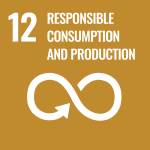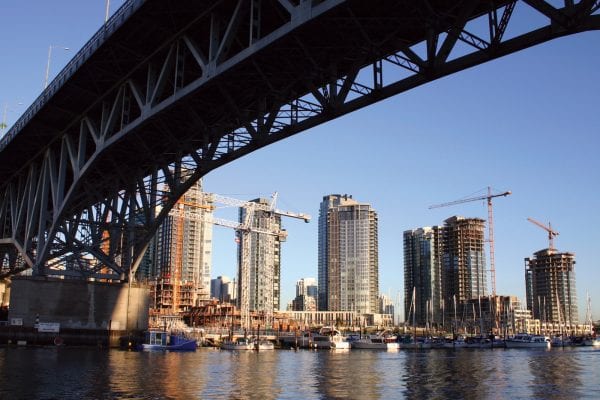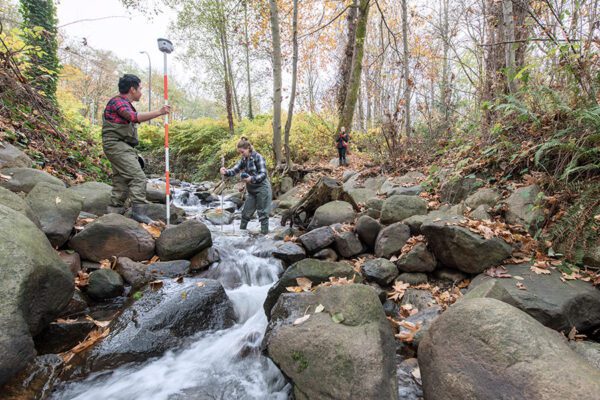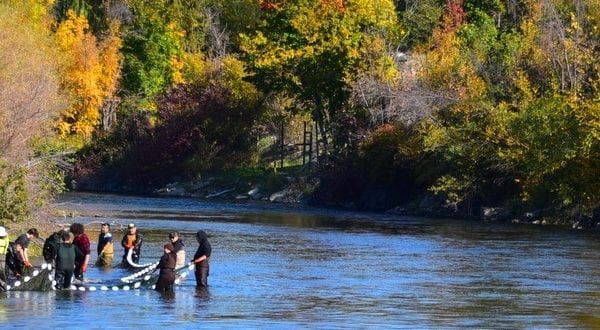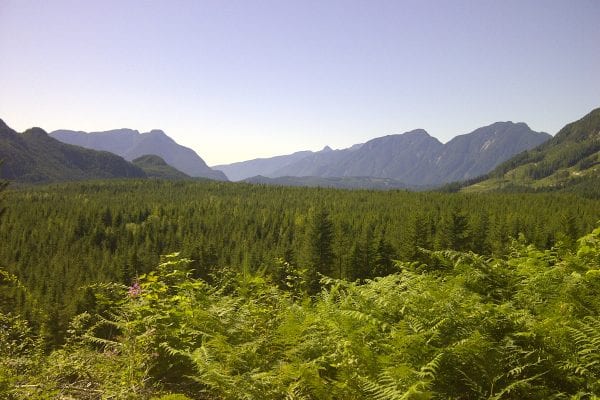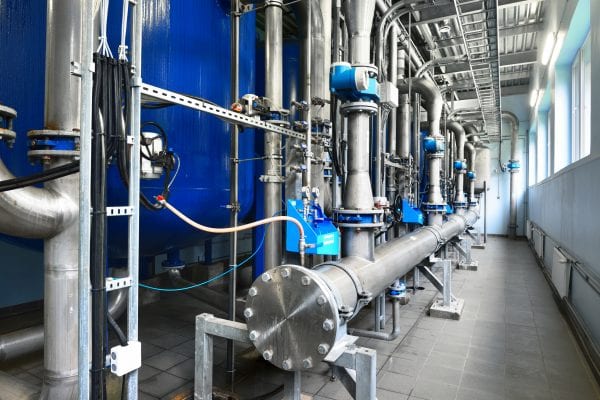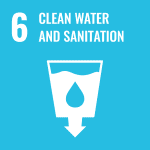
The decade 2018 – 2028 has been declared by the United Nations as the Water Action Decade – averting a global water crisis. The aim is to “bring a greater focus to sustainable development and a risk-informed integrated management of water resources for the achievement of social, economic and environmental objectives.”
SDG 6 not only addresses the issues relating to drinking water, sanitation and hygiene, but also the quality and sustainability of water resources worldwide. SDG 6 cuts across sectors and regions and has interlinkages to all other 16 SDGs, of which a majority are mutually reinforcing. Other direct references to water are found in:
- SDG 14: Life Below Water, calling for conservation and sustainable use the oceans, seas and marine resources
- SDG 15: Life on Land, including the protection of freshwater ecosystems and combating of desertification
- SDG 3: Good Health and Well-being, through ensuring healthy lives for all and combating of water-borne diseases
- SDG 11: Sustainable Cities and Communities, reducing the impact of water-related disasters (Target 11.5)
Learn more about the Water Action Decade in the video below:
Scroll down to see highlights of how BCIT is contributing to SDG 6.
Education & Research
Biochar is a soil amendment that is highly rich in carbon, whose positive effects in forest management continue to be researched. At BCIT, Civil Engineering, Ecological Restoration, Chemical and Environmental Technology, Chemistry students teamed up to research the effects this material may have in removing chemical contamination from stormwater to improve water quality in creeks and rivers. This project demonstrates the vision for BCIT campuses as living labs of sustainability by bringing students across several disciplines together to solve a challenge that is relevant to advancing sustainability at BCIT and around the world.
The long term goal is to incorporate biochar into green infrastructures like rain gardens which can be installed on the Burnaby Campus. The approach would help improve the water quality in Guichon Creek. This work was a product of the The School of Construction and the Environment (SoCE) Green Value Strategies in Development Applied Research Endowment Fund.
For more information on how biochar can be used for the improvement of water quality, see the Ecocities Now book chapter entitled The Restoration of an Urban Creek Water Quality Using Sand and Biochar Filtration Galleries by BCIT’s Dr. Ken Ashley, Director of Rivers Institute, Dr. Colleen Chan, Faculty, Natural Resources and Engineering, and Samira Jalizi a graduate of the Master of Science in Ecological Restoration program. Through this research, the authors investigated the efficacy of biochar as a filtration media for removing various pollutants found in a heavy use parking lot, and found biochar to be a promising filtration mechanism in low impact development (LID) designs such as rain gardens.
Check out the BCIT news article on the biochar research.
The Living Labs initiative is a pan-institutional, collaborative approach to hands-on learning that:
- foster skills development through access to campus infrastructure and information,
- demonstrate leading edge technologies and equipment, and
- present opportunities to conceptualize, design and implement solutions that advance the state of practice.
During the 1920’s, Guichon Creek was still a vibrant part of the ecosystem, and people could catch fish along its banks. From 1930 to 1960 the creek was urbanized and the lower half was culverted. In the 70’s and 80’s restoration work began at the South end of the creek. BCIT staff, students, the River’s Institute, and the City of Burnaby worked to restore the creek.
Guichon Creek transects the east side of the Burnaby Campus and is a fish bearing stream at its south end. Near the mid-point on campus, Guichon Creek spills into a large concrete culvert and travels underground through the north-east quadrant of the campus.
The ongoing restoration of the creek provides a Living Lab opportunity for BCIT students to work along the creek to learn and conduct a variety of assessments used in natural resources management. Among other parameters, students assess fish, invertebrates, and water quality. This work helps students deeper understand the interconnectedness of ecosystems, and advances sustainability on campus by helping BCIT identify ways of enhancing Guichon Creek.
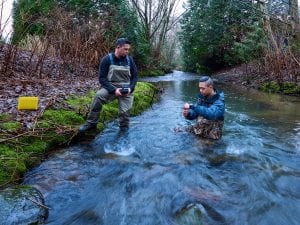
Hydrological data from the creek has also been utilized by Engineering students as a real-world testing site, to supplement classroom activities.
BCIT’s Campus Development Plan identifies daylighting the entire length of Guichon Creek as an important objective that supports the Institute’s sustainability goal of becoming ecologically restored.
The BCIT Rivers Institute is led by Dr. Ken Ashley in the Rudy North Chair in River Ecology. The Rivers Institute was created to provide an important place for non-profit agencies, other post-secondary institutions, government bodies and international partners to “plug-in” to BCIT’s expertise, resulting in a united community with the shared mission of restoring endangered rivers, streams, lakes, estuaries and wetland ecosystems in British Columbia and beyond.
They teach the theory and practice of aquatic ecosystem restoration and provide guidance and expertise for community based restoration initiatives, conduct applied research, and mentor the next generation of ecological restoration professionals. They are closely integrated with environmental education programs at BCIT including the Ecological Restoration Degree Program, Fish, Wildlife, and Recreation Diploma Program, Forest and Natural Areas Management Diploma Program, and the Civil Engineering and Environmental Engineering Degree Programs.
Related SDG:
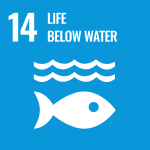
The Burnaby Campus is home to The Centre for Architectural Ecology, where vegetation-growing roofs are tested, demonstrated, taught about, and improved upon.
Both durable and affordable, green roofs reduce storm water run-off, insulate buildings to lessen energy use, improve air quality by increasing “green space”, offer habitat, and more!
Vancouver green roofs reduce roof runoff by 28%, according to BCIT research. Wise water management means conserving by reducing use and wastewater production. Unabsorbed rain and other water is “storm water” that usually runs off roofs and pavement into storm drains. So, green roofs use water that could have become waste, and help reduce storm sewer discharge.
Storm water can contain oil, gas, sediment, fertilizers, and other contaminants. Heavy rains can overwhelm our systems and allow untreated water into streams. Storm water treatment also requires a lot of energy and infrastructure.
Related SDGs:
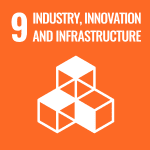
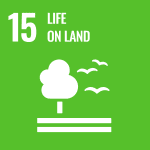
Engagement
CityStudio Vancouver is an innovation hub that brings together city staff, students, faculty and community to co-create experimental projects that make Vancouver more sustainable, liveable, joyful, and inclusive. Every year, BCIT collaborates with CityStudio on projects that further Vancouver’s strategic aims. As of spring 2021, 1,197 BCIT students have worked on over 200 projects in collaboration with CityStudio.
In Spring 2021, a group of students from the School of Business and Media created a marketing campaign strategy to raise awareness on the City of Vancouver’s Rain City Strategy. The Rain City Strategy was developed to address Vancouver’s two major water concerns: combined sewage overflow and rainwater runoff pollution through the introduction of Green Rainwater Infrastructure (GRI). With the help of BCIT Students, the Rain Down the Wrong Path marketing campaign was created with the objective to educate and engage the community. Campaign tactics included transit ads and social media ads to raise awareness; website and email marketing to educate and more.
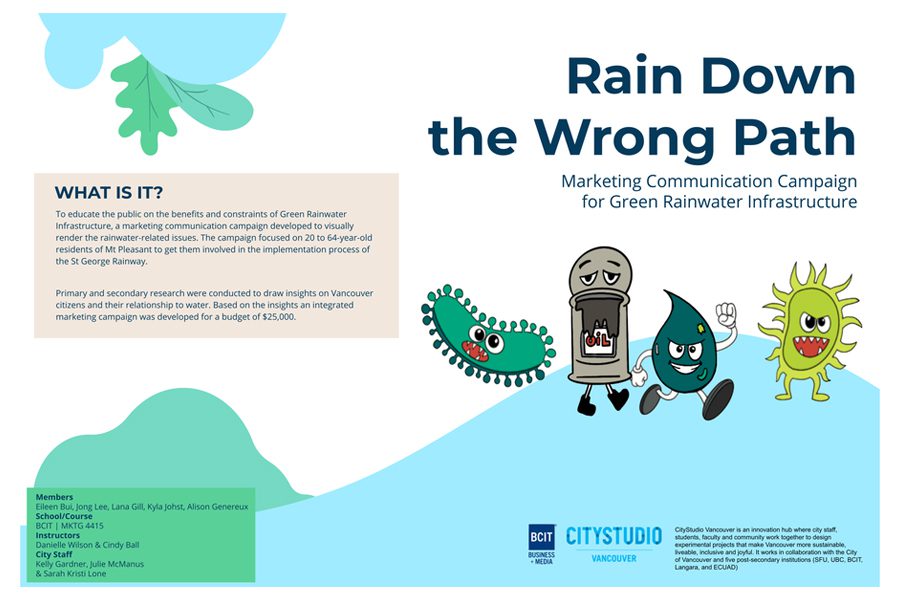
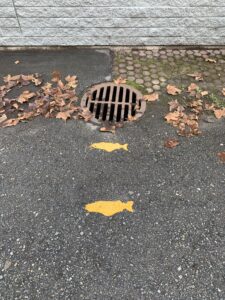
In 1995, the BCIT Environmental Action Centre marked Burnaby campus storm drains with painted yellow fish to create awareness about water pollution and fisheries habitat. The yellow fish remind us that whatever we put on the road makes its way into Guichon Creek, which flows through and under the campus, to join other streams and rivers.
Just one drop of motor oil can make 50 litres of water unlivable for water species. To be truly sustainable, BCIT wastewater must be usable as habitat; it must not be tainted with materials that threaten, or are toxic to, wildlife.
Fisheries and Oceans Canada developed Storm Drain Marking as a conservation and education project, often implemented by volunteers and individuals just like you.
Join us! It’s the law, and it’s the right thing to do – properly dispose of hazardous materials at BCIT through our recycling program.
Administration & Operations
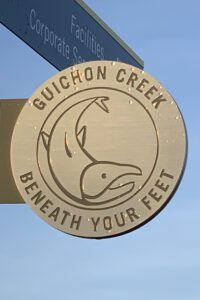
The ongoing daylighting of Guichon Creek will restore an important ecosystem, and become an iconic symbol of sustainability, increasing connection with our environment and providing green space on the Burnaby campus. It will also serve as a living lab for a multitude of fields, becoming a shared and interdisciplinary piece of infrastructure. Read more about the daylighting of Guichon Creek on the SDG 14 page.
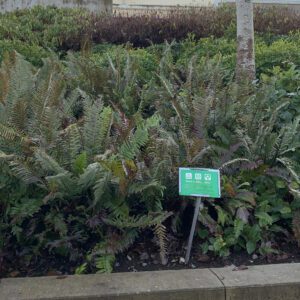
There are a growing number of rain gardens at the Burnaby campus. In addition to improving the curb appeal of our campus, these rain gardens represent a critical piece of storm water management. Not always that obvious to the campus community or visitors, Facilities and Campus Development started adding signs to the rain gardens in 2015.
Rain gardens are a simple way to infiltrate water into the ground from impermeable surfaces, such as pathways and parking lots. They also create less stress on our overburdened storm water systems. Rain gardens act as both a natural bio-filtration system and a temporary water reservoir, thus they are able to significantly reduce the amount of contaminated storm water that has direct access to our creeks and rivers. Rain gardens are located at the lowest point where water naturally flows. The water is temporarily held until plant root systems require it. The types of plants BCIT selects for these areas are those which prefer wet roots (also called marginal plants), and plants native to the Pacific Northwest.
Facilities Services manage third-party contractors who provide grounds, landscaping and pest control services. Environmentally-friendly landscaping approaches include replacing invasive species with native species when possible, and recycling or composting all green waste generated through landscaping activities.
BCIT takes a proactive approach to Integrated Pest Management (IPM) ensuring that any herbicide or pesticides are used only as a last resort to minimize runoff into Guichon Creek. Herbicide use is not permitted at any of our campuses unless approved by BCIT to deal with invasive noxious weeds as defined by both the Invasive Species Councils of British Columbia and Metro Vancouver.
Related SDGs:



Managing snow and ice on roads and sidewalks with road salt can have downstream effects on the health of local ecosystems. Facilities Services pays close attention to the risks that sodium chloride (salt) run-off poses to watersheds and soil.
“We’re fortunate to have such a unique green space on our campus,” explains Adam Dickinson, Manager Transportation and Grounds “We have forested areas, and a creek system tied into further waterways downstream from us, so we have to do our part to help keep that safe.”
BCIT uses a three-pronged “snow plan” that can dramatically reduce salt usage. The plan involves a liquid brine technology applied prior to a snow or ice event to prevent the formation of frost, ice, and hard packed snow as well as pre-wetted salt and a non-chloride potassium based liquid de-icer. It’s estimated that the old system required a pre-event application of 20 tons of rock salt to cover all campus road and parking areas. In contrast, the new brine application process requires only 3 tons to cover the same area.
Check out the BCIT News Article for more information.
The improper handling and disposal of hazardous materials can lead to the run off of harmful chemicals into our waterways. Polluted waterways not only pose a risk to water-based ecosystems and species, but ultimately human health as well.
At BCIT, hazardous waste management is taken seriously. The disposal of any hazardous waste generated by BCIT is handled by Sybertech Waste Reduction Ltd (SWRL), a biohazardous and industrial waste treatment and disposal company who uses the proper channels for disposal. They pick up waste roughly every quarter and provide BCIT with government certified certificates showcasing the proper disposal of the hazardous items.
Hazardous material is not brought onto BCIT campuses unless explicitly requested keeping BCIT’s in-take of hazardous material low.
Related SDG:
